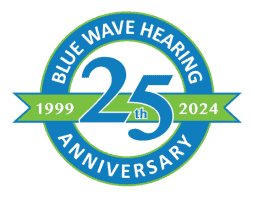- Alcohol and Hearing Health - April 9, 2025
- How Smoking Can Harm Your Ears - March 11, 2025
- Succeeding in the Workplace with Hearing Aids - February 10, 2025
It’s common for people with hearing loss to have balance issues, and vice versa.
This phenomenon might even affect you or a loved one. Do they occur together as a coincidence, or are hearing and balance actually related? It turns out the answer is, “It depends.” Let’s look at some basics first.
The Inner Ear
The inner ear is also known as the bony labyrinth, and it consists of both the cochlea and the vestibular system.
- The cochlea (hearing): The cochlea is where sound signals are captured, converted to electrical signals, and sent to the brain to be interpreted as sound.
- The vestibular system (balance): This comprises three bony canals and two pouches. These work together to tell your brain where your head is in space, as well as when and how it’s moving.
Hearing and Balance Problems
Both hearing and balance depend heavily on the status of your inner ear, so it makes sense that what affects one may affect the other. But let’s look at some examples to see how parts of the inner ear can be affected to cause different conditions.
Noise-induced hearing loss
Noise-induced hearing loss is an example of hearing loss with no inherent balance problem. It is caused when the hair-like hearing cells in your cochlea are damaged. This damage means less (or distorted) sound input is sent to your brain. Because it’s only in your cochlea, this damage usually doesn’t affect your balance.
Benign paroxysmal positional vertigo
Usually abbreviated BPPV, this is an example of a balance problem with no hearing loss. It causes sudden, brief spells of vertigo (a false feeling of spinning) and may be triggered by certain head movements.
What causes BPPV? The two pouches in your vestibular system hold a gel filled with crystals. These crystals react to gravity and help you understand when you’re speeding up and slowing down. But sometimes a crystal gets loose and floats into one of the three bony canals. When enough of these crystals end up in a canal, the fluid in that canal doesn’t flow as it should, and incorrect balance signals get sent to your brain. Because this doesn’t involve your cochlea, it doesn’t affect your hearing.
Ménière’s disease
Ménière’s disease is an example of hearing loss and balance problems that are often related. In fact, those are the chief symptoms — hearing issues in conjunction with balance problems.
This condition results from a buildup of endolymph, a fluid that fills the chambers and tubes of your inner ear. The increased pressure from the buildup confuses the hearing and balance receptors throughout, resulting in incorrect signals getting sent to the brain.
It’s Not a Slam Dunk
Many things lead to hearing loss. Many things lead to balance issues. As specialists in all things inner ear, an audiologist is uniquely suited to consider all your symptoms and determine which parts of your inner ear are causing you trouble. If you’re worried about a balance problem — yours or a loved one’s — contact us today to schedule a consultation.


